3.2 Zoom In
| Site: | Cowichan Valley School District - Moodle |
| Course: | ELA5, CSS, Sferrazza |
| Book: | 3.2 Zoom In |
| Printed by: | Guest user |
| Date: | Monday, 29 December 2025, 5:05 PM |
Learning Targets
By the end of this lesson, you should be able to say YES to the following question.
- Can I recognize nonfiction text features?
- Can I tell the difference between fiction and nonfiction forms of text?
- Do I know the different purposes of fiction and nonfiction forms of text?

Zoom In
What do you think zoom in means?
Just as a camera has the ability to zoom in or highlight a portion of an image, readers can learn to zoom in on the features of text to highlight what is important.
You are going to learn to zoom in on the pages of nonfiction texts. They often have a lot going on on each page. Good readers can zoom in on certain places to find the needed information. When you zoom in, it means you take a closer look at certain parts of the page instead of skipping over them.
Zooming in helps you to focus on information you are trying to find or that is important.

In The Beginning
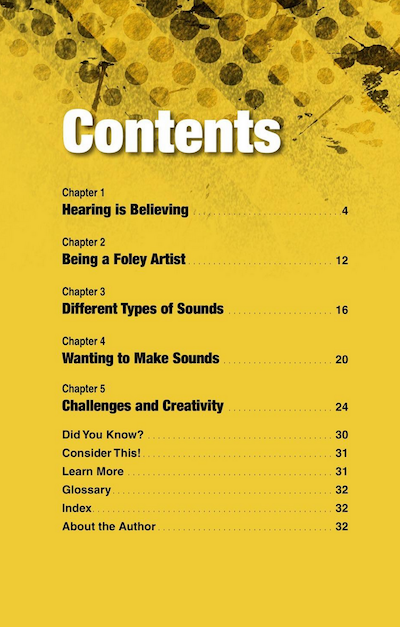 Let’s zoom in on the first page of a nonfiction book. What do you notice?
Let’s zoom in on the first page of a nonfiction book. What do you notice?
A table of contents is a text feature that helps us quickly see what is “in the book” and helps us to find what we are looking for. This table of contents is from a nonfiction book, Sound Effects Artist - Odd Jobs.
On what page does the chapter about different types of sound begin?
If we want to look up an unfamiliar word, on what page can look?
(Source: Loh-Hagan, Virginia. Sound Effects Artist - Odd Jobs. Ann Arbor, Michigan: Cherry Lake Publishing, 2016.)
A Closer Look Inside...
Let’s look at a content page. The first thing I notice is the way the page is laid out. It’s different than a fiction book. This page is from the book, Sound Effects Artist - Odd Job.
What is different about this page compared to most novels and fiction books you have read? How many differences can you notice? (Either talk to your home facilitator about what you see or jot differences on a piece of paper.)
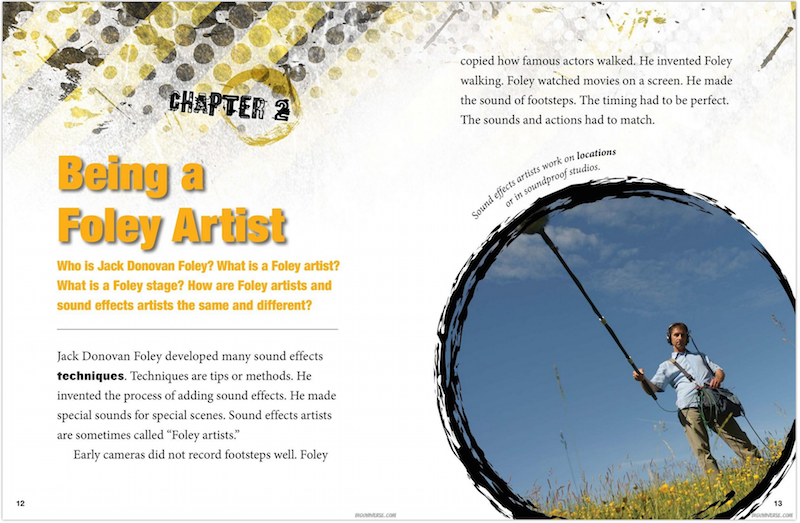
(Source: Loh-Hagan, Virginia. Sound Effects Artist - Odd Jobs. Ann Arbor, Michigan: Cherry Lake Publishing, 2016.)
What Was Different?
Did you notice all of these differences?
- different kinds of printing on the page
- different sizes of printing on the page
- a photograph
- the photograph had a caption that explained what was being shown
- there was a word in bold font - that often means the word is in the glossary.
A Closer Look Inside 2...
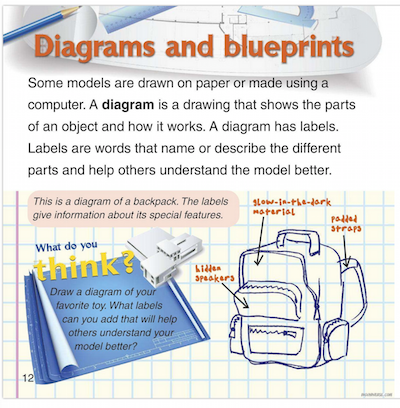 This is from a different nonfiction book.
This is from a different nonfiction book.
Can you find:
- title
- diagram
- labels
- bold (darker) lettering to emphasize a word and often to show it is in the glossary
- captions
(Source: Miller, Reagan. Engineers Build Models. Catharines, ON: Crabtree Publishing Company, 2014.)
A Closer Look Inside 2 - Explained
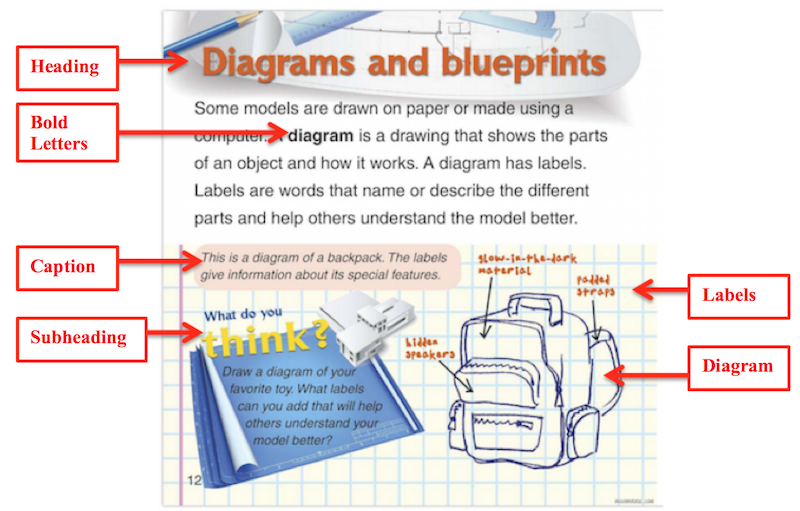
Nonfiction Features
A fiction book might have words and a picture but a page of nonfiction can have many different things: photos, bold headings, labels, captions, and some bolded text. These are nonfiction text features. They are characteristics of nonfiction books, and most nonfiction books include some of them. Fiction books do not have many of these features.
Why do you think nonfiction books have these special features, but most fiction books do not?
More About Features
Nonfiction text features include text (headings, subheadings, labels, captions, use of font), graphic aids (maps, charts, diagrams), and special organizational features (table of contents, index, lists). An author may choose text features. How does nonfiction text look different from fiction?
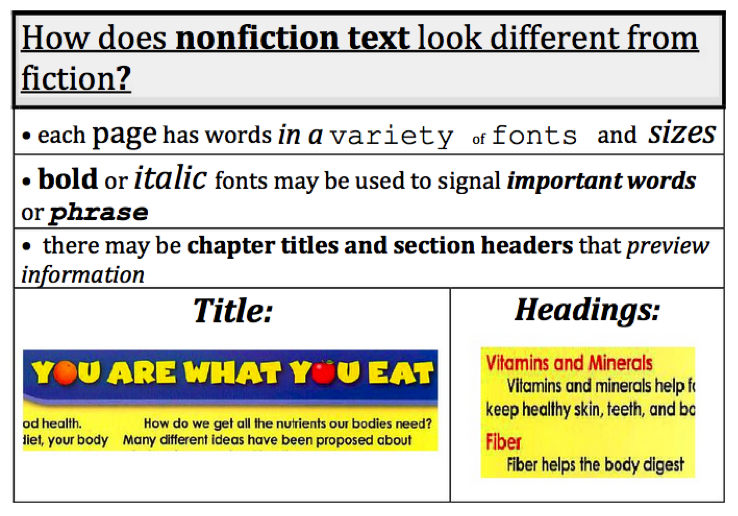
An author may choose graphic aids. How are graphic aids used?
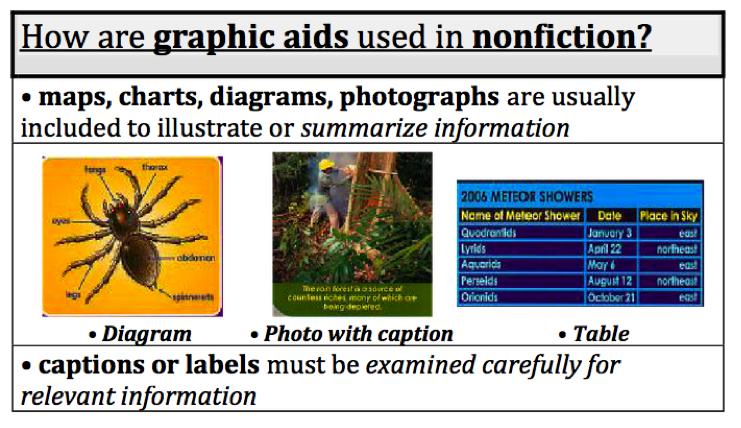
Venn Diagram
A Venn Diagram can be used to compare and contrast things or ideas. Here is a Venn diagram comparing fish and whales.
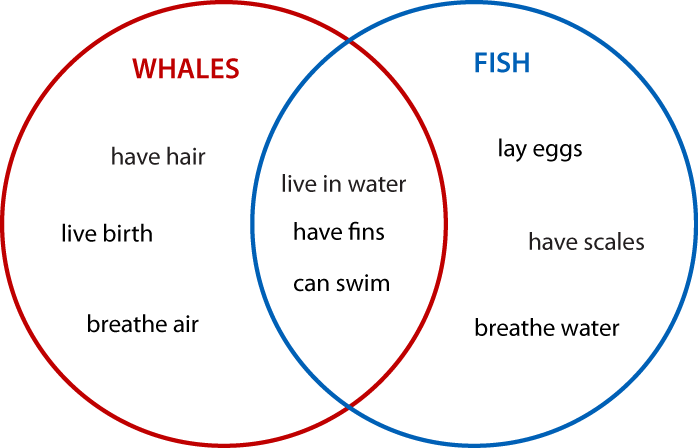
Notice that where the circles overlap, there are qualities that are the SAME. Where the circles are not overlapping, there are qualities that are DIFFERENT and belong to only fish or only whales.
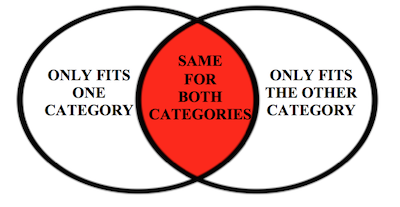
Your Task
In your Learning Guide, compare (things that are the same) and contrast (things that are different), fiction and nonfiction. What nonfiction features were pointed out in today’s lesson? What is different about fiction? What do they have in common?
